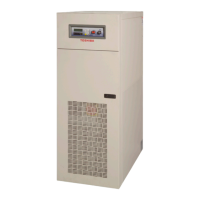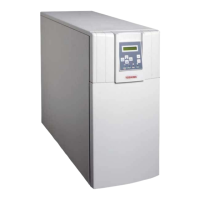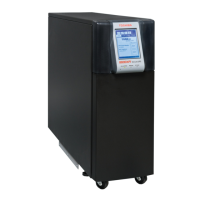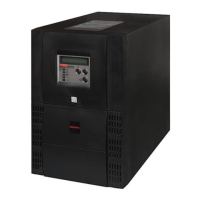22
4400 Series Installation and Operation Manual – 64527-008
6.4 UPS Component Information
Component General Name
Life Expectancy (in years)
Standard Operating
Condition*
Maximum Severity Operating
Condition**
Thyristors / SCRs 15 10
Power Magnetic Components (transformers, reactors /
inductors, coils)
15 8
Control Power Supply 15 8
Resistors 15 8
IGBTs 12 8
Contactors 12 8
Control Relays 12 8
Electrolytic Capacitors 10 8
AC Capacitors 10 8
Printed Circuit Boards (PCB) 10 7
LCD 10 7
Fuses 10 7
Thermal Relays 10 7
Cooling Fans 6 5
* Standard Operating Condition is dened as: The UPS installed location where the annual average temperature is be-
tween 77 °F (25 °C) and 32°F (0° C) with no greater temperature of 89°F (32°C) in a clean environment (ISO 6) with 3 to 4
air changes per hour without any contaminating gases. The UPS load is constant 10 to 90% of UPS rated capacity.
** Maximum Severity Operating Condition is dened as: The UPS installed location where the annual average tempera-
ture is 104°F (40°C) in an environment above ISO 6 with air changes less than 3 per hour without any contaminating
gases. The UPS load is at or above 100% of UPS rated capacity and may not be constant.
Notes:
Component life expectancy shown is based on the recommended preventative maintenance of once per year on the UPS.
Component Life Expectancy calculations are based on component manufacturer’s recommendations. Previous Toshiba
UPS models similar to the 4400 Series UPS in design and topology (Toshiba 4000, 4100, 4200, and 4200FA Series UPS),
Component Life Expectancy exceed years shown above in both Operating Conditions by over 25%.
Internal VRLA Batteries are not included in the table. Battery life expectancy is dependent on application and the amount
of discharges. Typical VRLA battery life for the Toshiba 4400 Series UPS in standard operating condition with less than 70
battery discharges is 4 to 5 years.
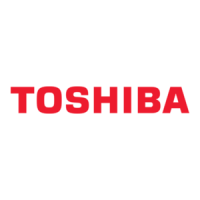
